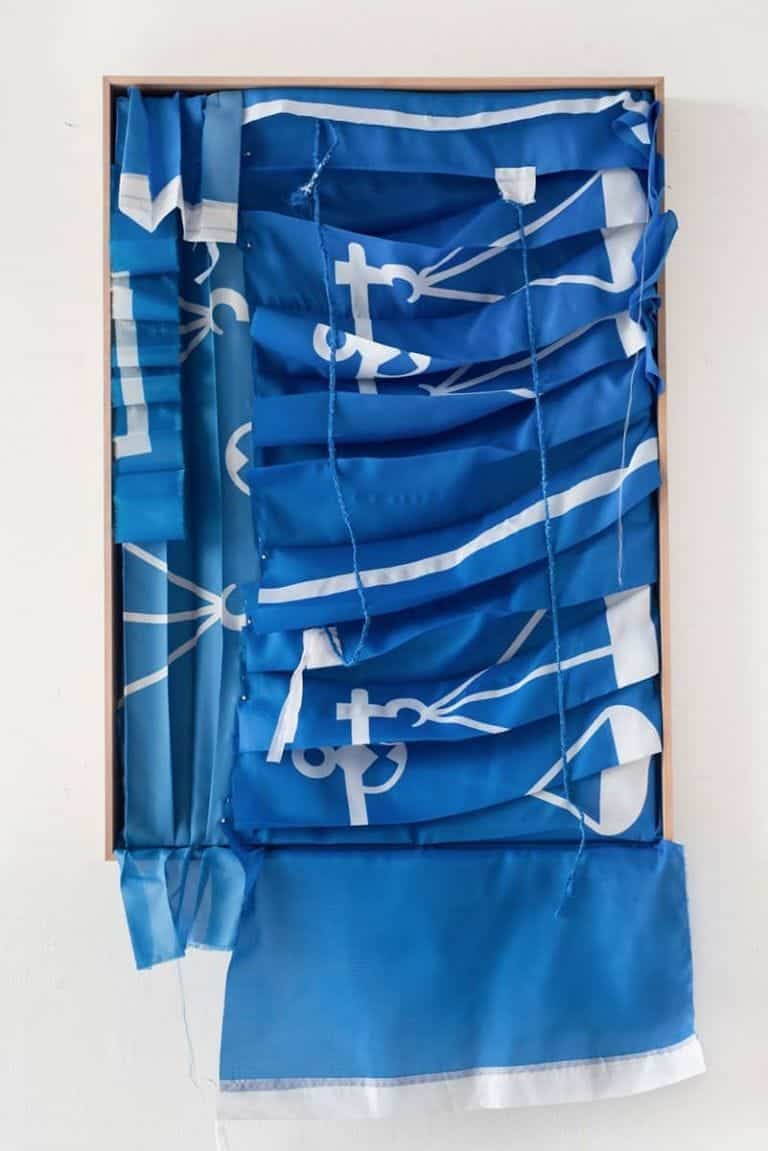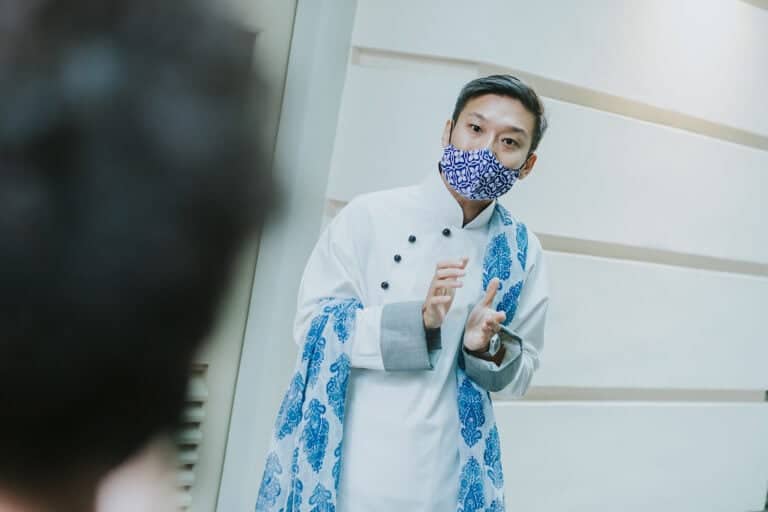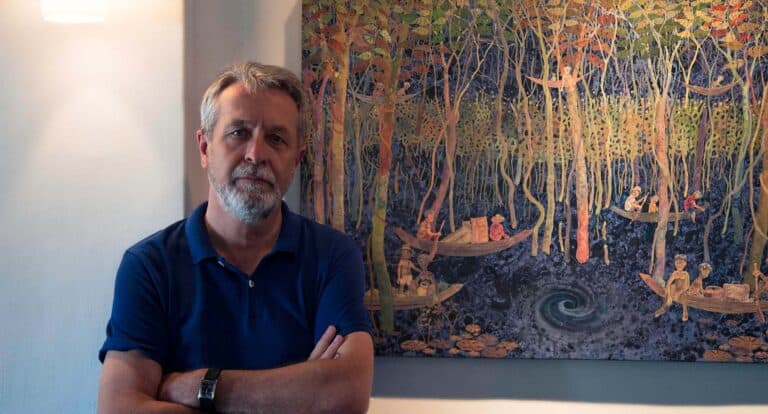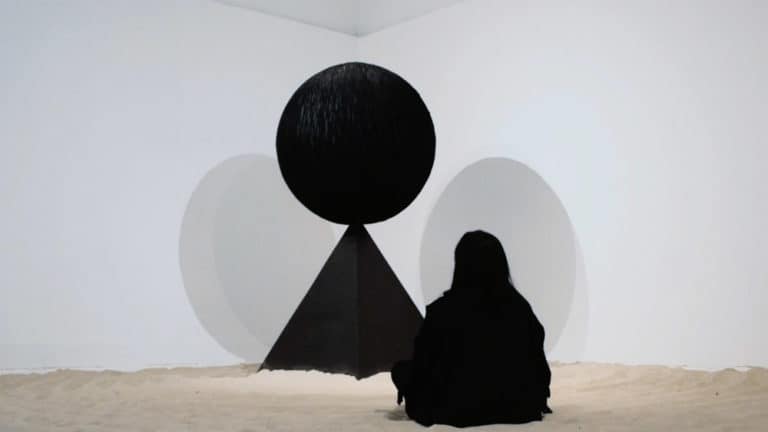The last thing I expected when visiting the recent launch of UNIQLO’S Spring/Summer 2023 collection (yes, you read this right: UNIQLO, the fashion label) was a panel on publishing.
I was as baffled as you are: don’t worry, I’ll get to how all of this makes sense in a little bit.
Enter LifeWear Magazine
This season’s launch not only coincided with a fashion showcase but also that of the latest issue of UNIQLO’s LifeWear magazine.
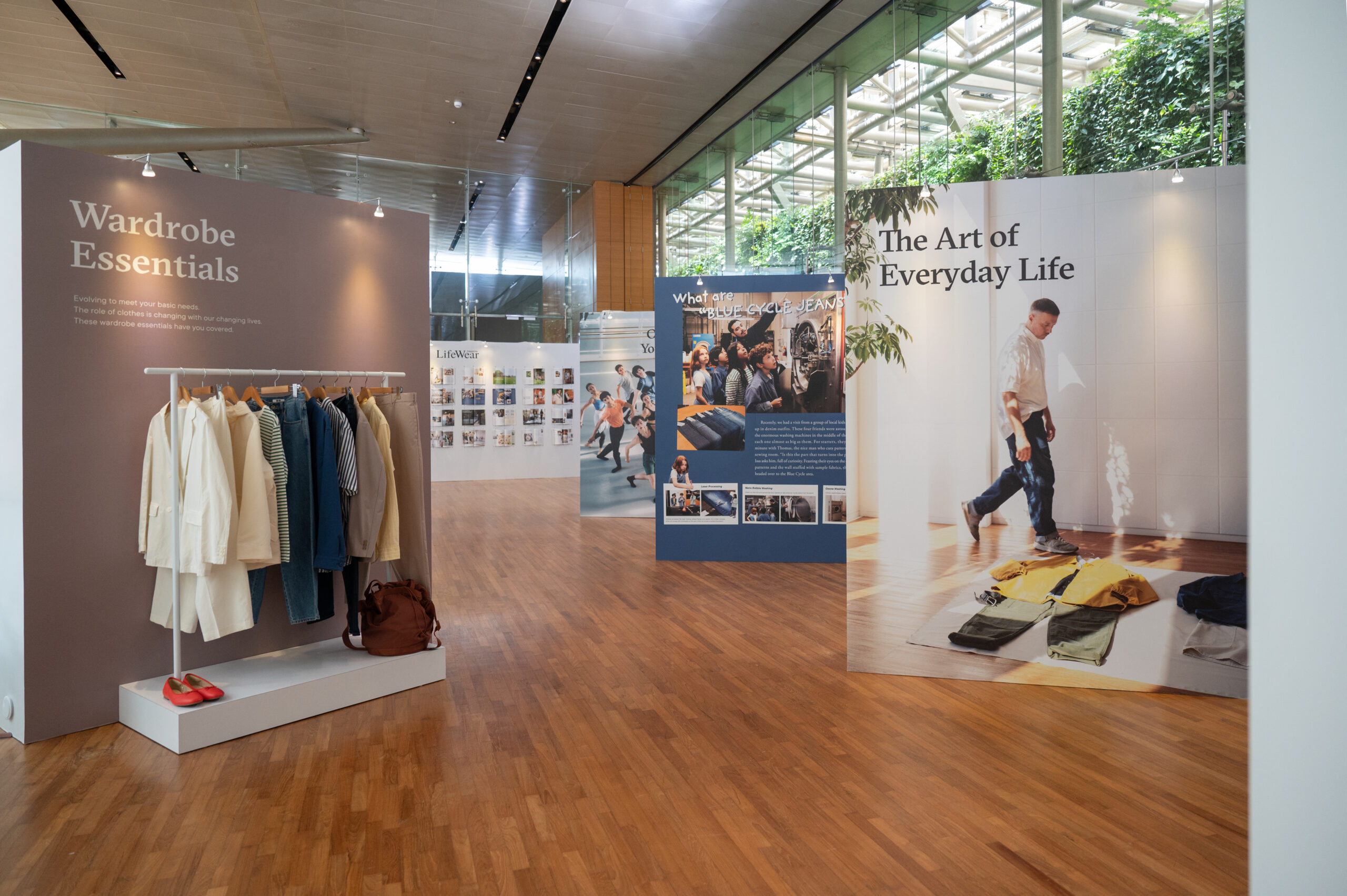
Imagine my surprise to learn that UNIQLO had a full-blown physical magazine (that wasn’t a boring catalogue!), filled to the brim with slick photoshoots set in destinations like Kyoto, Los Angeles, and the Yarra Valley, accompanied by styling tips and thoughtful editorials featuring artists, artisans, and creatives of all types from around the world. It’s helmed by Takahiro Kinoshita, who’s the Group Senior Executive Officer for Fast Retailing, as well as Creative Director of the Fast Retailing Global Creative Lab and Senior Executive Officer of UNIQLO R&D.
While the magazine obviously functions as the brand’s editorial arm, it was wonderful to read about how art and fashion are so closely tied together. The latest issue for example featured stories on how conservators at the Boston Museum of Art were taking care of Japanese ukiyo-e prints (that UNIQLO has featured on its t-shirts) and how artists in Los Angeles incorporate denim into their lifestyles.
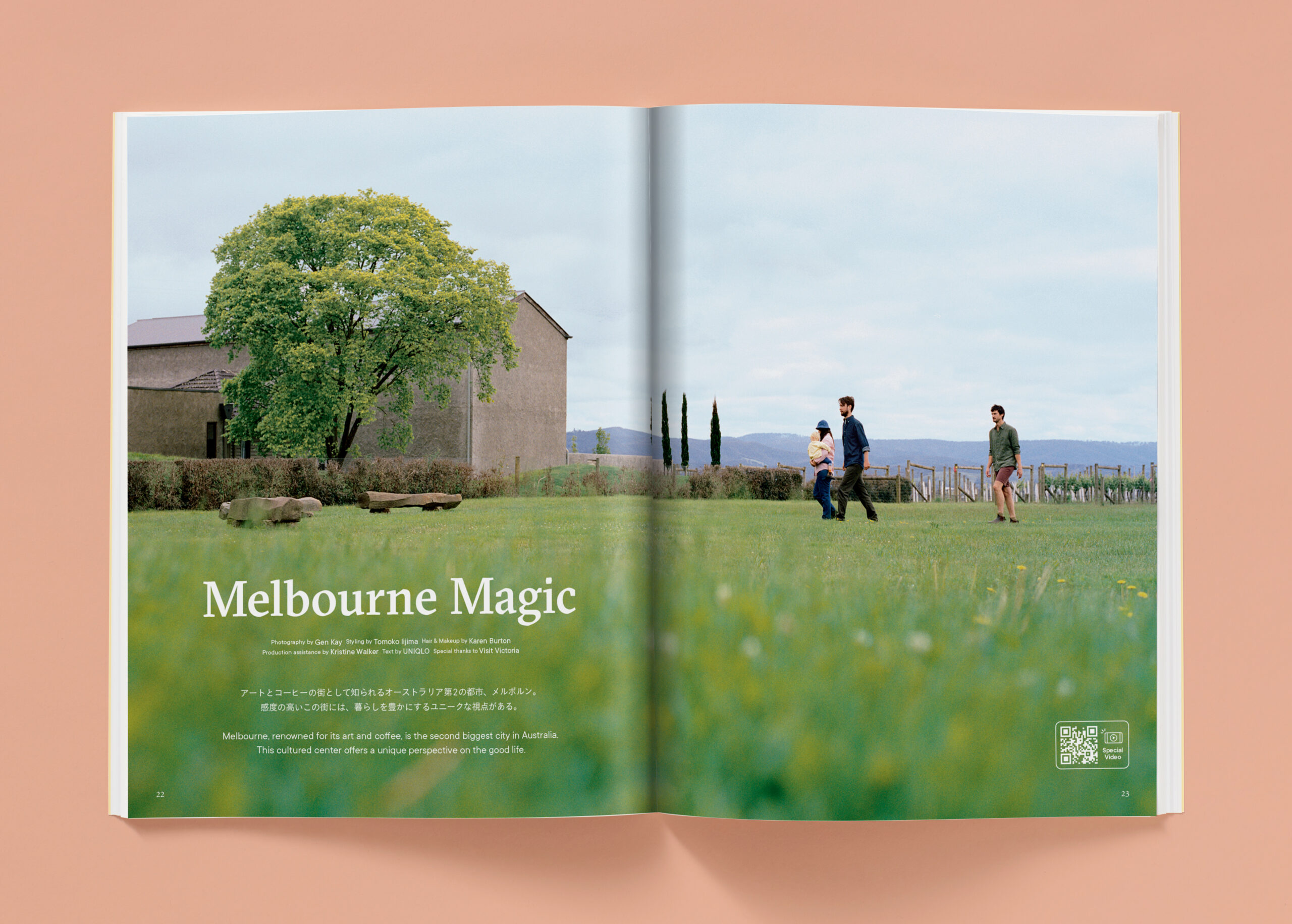
A flick through the publication took me right back to my teenage days when I used to save up pocket money to buy magazines (I remember being particularly taken by the American and Japanese editions of NYLON magazine for their distinct, local styles). As a kid I pored endlessly over gorgeous layouts and glossy photographs, clinging to every word like scripture.
Eventually, I became enamoured by the way typography, the written word, and photographs could come together to tell stories, offer advice, and urge me to see the world differently. Looking back, maybe it’s no surprise that I ended up pursuing an editorial career.
Behind the scenes
This is where Kinoshita comes in. Before joining UNIQLO, he had nearly 30 years of experience as a magazine editor, working on Japanese publications that I admired in my youth such as Brutus and POPEYE. In addition to the many hats that he wears, he’s also the Editor-in-Chief of UNIQLO’s LifeWear magazine, the brand’s semi-annual physical publication that was launched in August 2019.
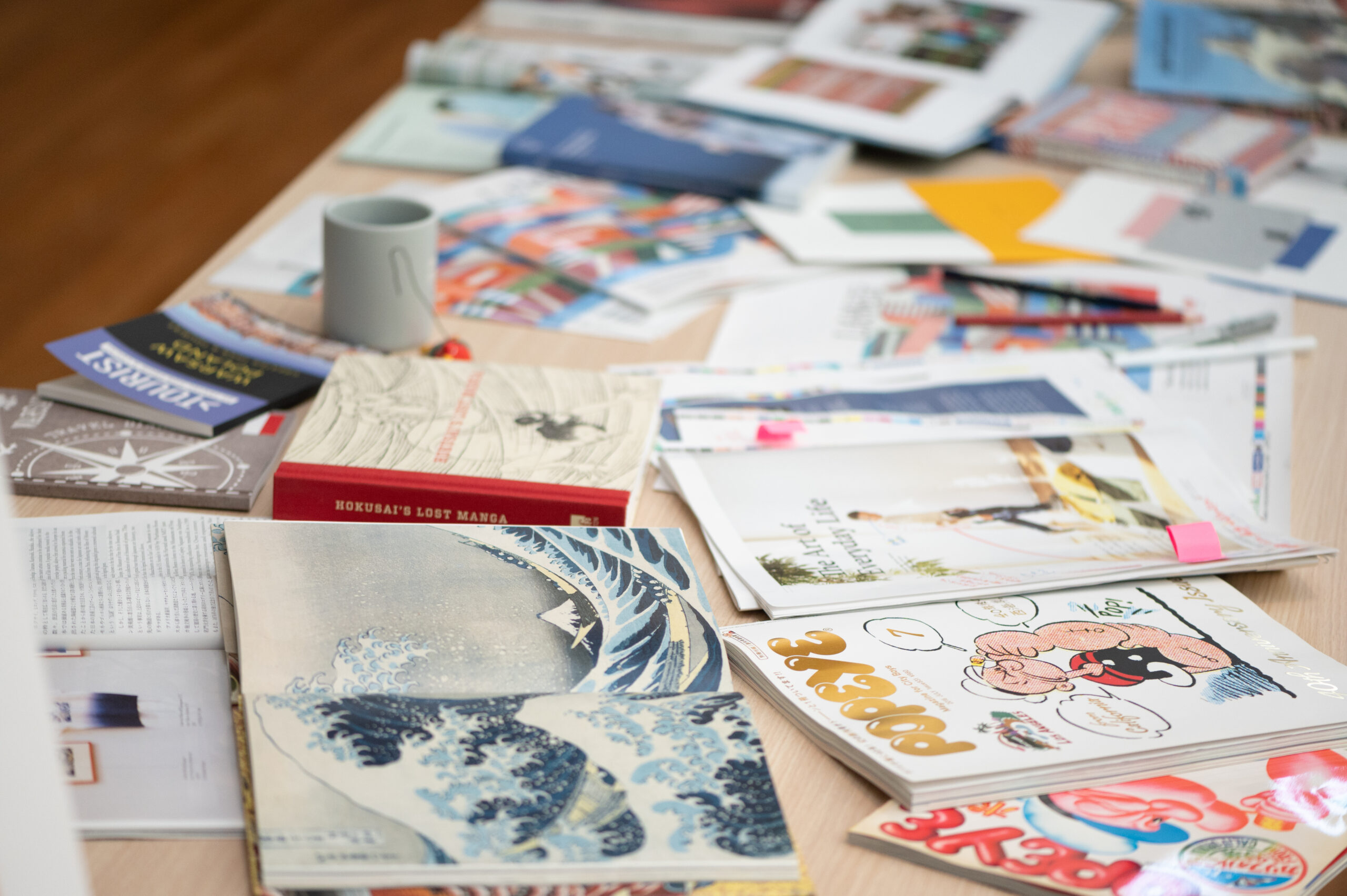
This did shock me a little, considering how numerous print magazines have folded and are unfortunately continuing to shut down in this age of rising costs. I mean, there’s a reason why you’re reading this story online rather than in the pages of a physical publication.
While Kinoshita had flown in to speak about Uniqlo’s new seasonal collection, he also introduced the current issue of LifeWear. It’s themed ‘The Art of Everyday Life,’ and is inspired by the small things in life that he considers to be art—be it eating a good meal or wearing a special piece of clothing.
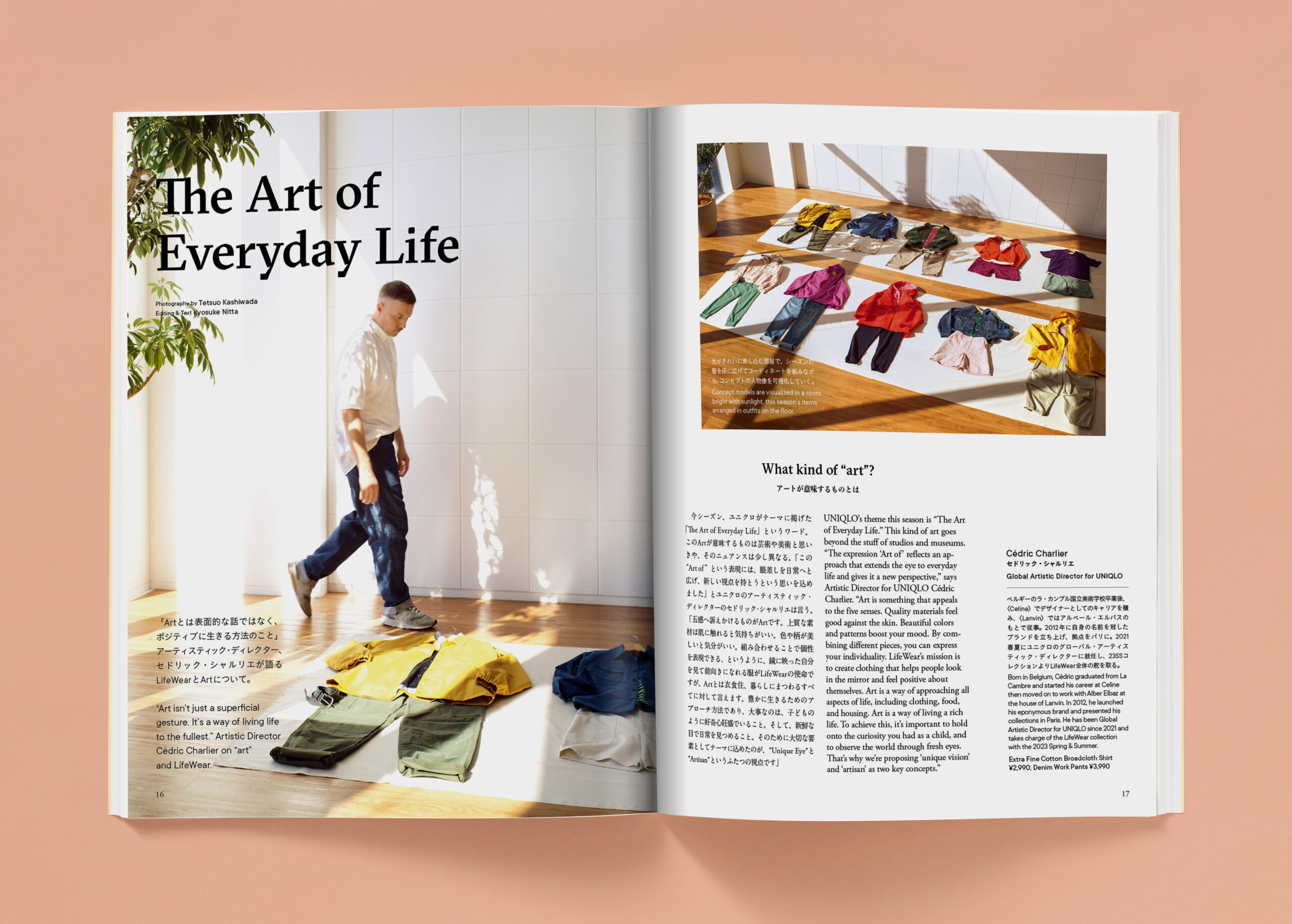
Sharing more about the behind-the-scenes creation of the magazine, Kinoshita mentioned that he works mainly with three other editors, a graphic designer, and an artistic director and that it takes about six months to start discussions on the upcoming issue’s theme.
In terms of research and planning, Kinoshita and the team embark on these processes more traditionally by “relying a lot on print-based resources” while recognising that the “foundation [of the magazine] definitely lies in the people that we talk to and meet.”
Contrary to how many publications pursue journalism these days, Kinoshita explains that the team “researches the internet but not so much for the actual resources for the magazine itself.”
“We largely rely on it to see what topics are not on the internet yet. It is quite an old-fashioned approach.”
Between Art and Fashion
Glancing at the recent issue’s cover—featuring a kaleidoscopic drawing by Irish architect Nigel Peake, which blends hand-drawn textures and weaving geometries—it’s obvious that creating a magazine is a highly creative and aesthetic-driven process. Kinoshita mentioned that he had admired Peake for a long time and managed to meet the artist on a recent trip to Kyoto, before inviting him to design the cover.
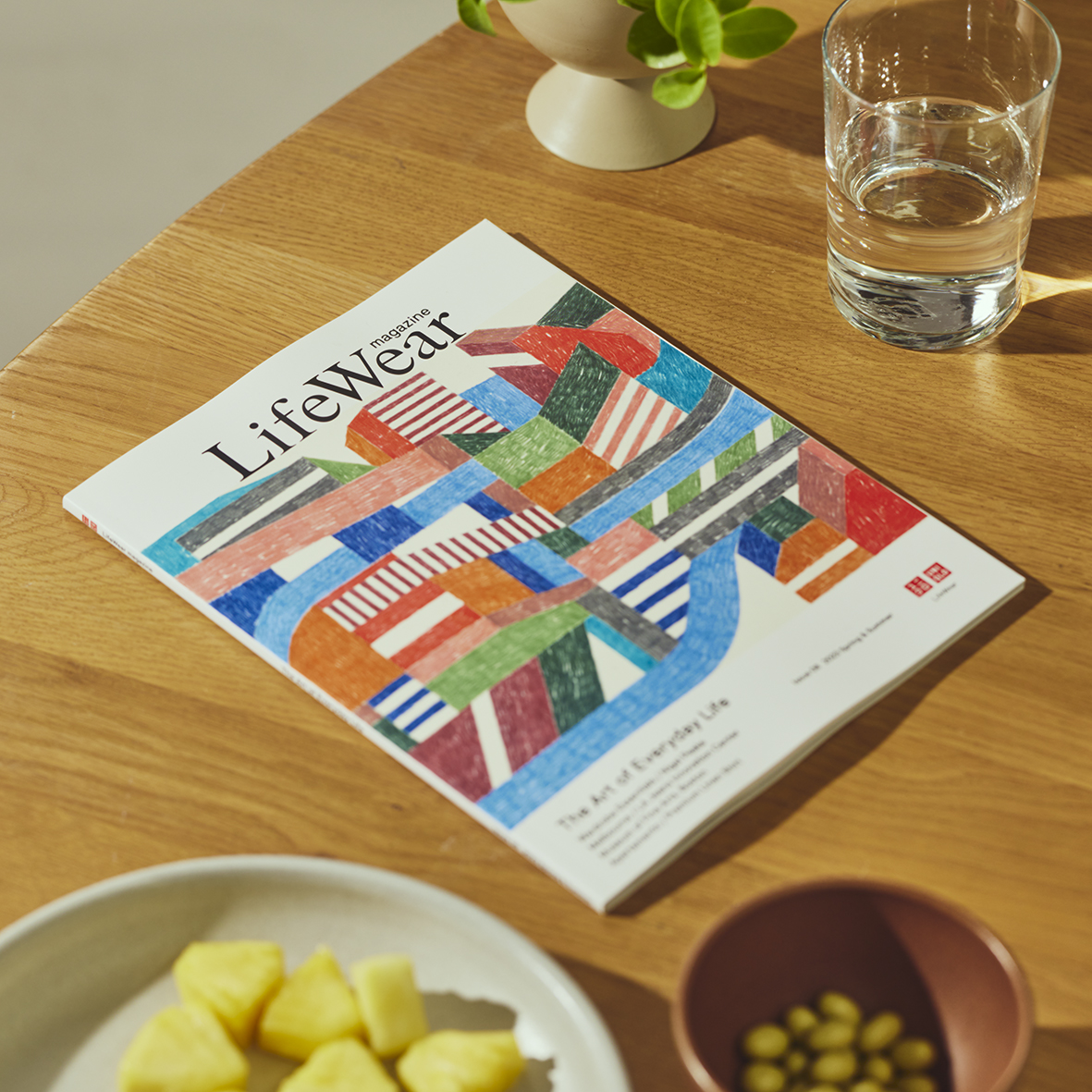
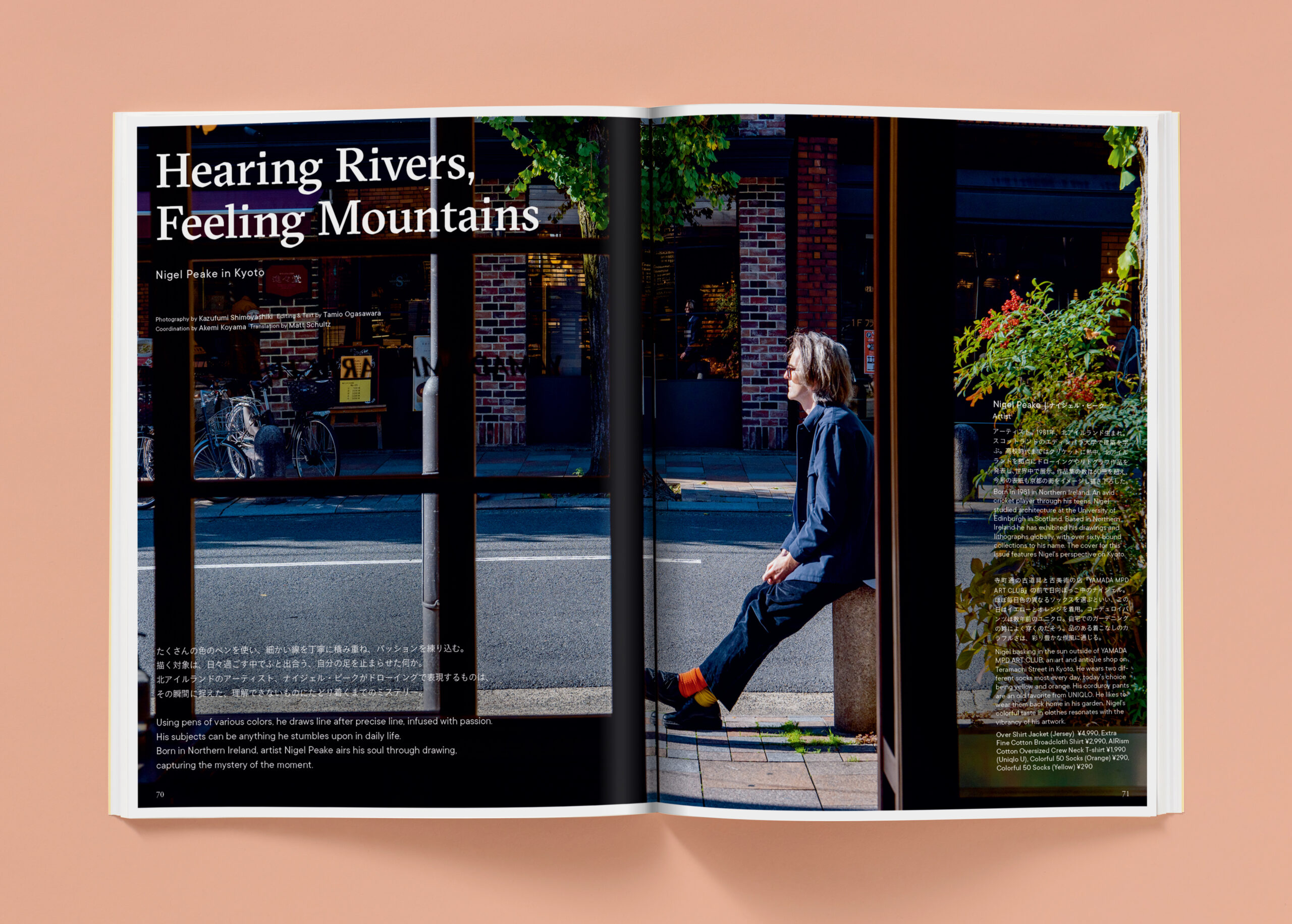
With the help of a translator, I got to learn more about Kinoshita’s thoughts on the relationship between art and fashion:
“Fashion can be colourful, vivid and extravagant because it’s not just an art [form] but something that speaks to your inner self. At UNIQLO, we work together with artists and museums like ther Louvre and MoMA to create UTs (UNIQLO tees).
We have created many T-shirts with artists and artistic facilities. When we create these T-shirts, it brings great smiles to people, so I think that’s a great impact on fashion.”
Reminding us how important it is to remain inspired when working on a visual medium such as a magazine, Kinoshita proclaimed, “art plays a big role for me. I always make sure I spare some time to go to art exhibitions.”
Prior to visiting Singapore, he visited the Tokyo Art Museum and before that, he checked out American figurative artist Alex Katz’s exhibition in New York City. “There are many artists that inspire me,” he mused.
“Artists’ works don’t appear directly in the magazine but going to look at exhibitions accumulates inspiration in me.”
As for artists that he would like to collaborate with in the future, he singled out David Hockney—“the British artist who has paintings of the man by the pool.”
While Kinoshita has proposed working with the practitioner, nothing has come out of it quite yet. “I really hope to work with him because he’s alive!” He exclaimed, before speaking enthusiastically about attending Hockney’s exhibitions and admiring his photographs and paintings.
The meaning of magazines
One thing that I can’t help but fixate on is the fact that LifeWear Magazine has taken on a physical form, in a highly digitised age and challenging economy that’s forcing media groups worldwide to stop publishing in print.
On top of this, a lot of resources go into producing and publishing a physical magazine, be it through the hiring of writers and photographers, travel to glamourous destinations for photo shoots, and of course, the actual printing costs involved in the production of the publication. This proves to be an extremely costly operation, especially in contrast to how many brands these days prefer to adopt online content platforms or create (arguably more sterile) product catalogues to drive sales; moves that might be more affordable and more easily streamlined.
But as it turns out, the creation of LifeWear Magazine was something that had been suggested by UNIQLO President Tadashi Yanai himself, as both he and Kinoshita “love magazines.”
“We believe magazines still possess the appeal that draws people in. That’s why we spend a lot on this,” Kinoshita continued. On the magazine’s value, he noted that some media have approached UNIQLO to learn more about the magazine, so he sees this as a win.
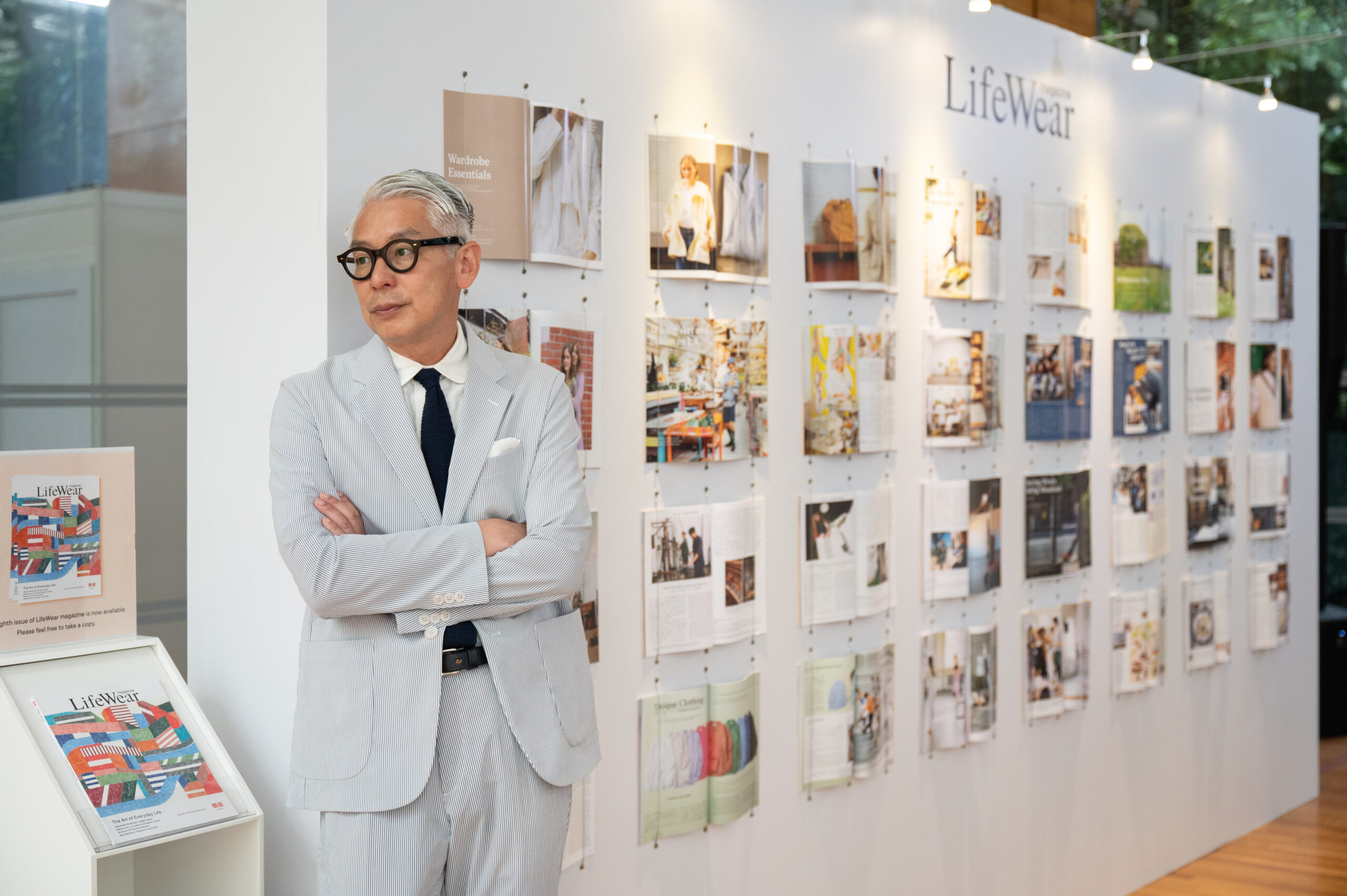
Finances-wise, Kinoshita explained that it costs roughly the same amount of money to create the magazine as it does to create a commercial.
“So for us, we will do one less commercial and make a paper magazine instead, because not many companies are willing to do that. Many will prefer to do the commercial, so that’s why we do the magazine.”
Today, the magazine is available for free at every UNIQLO store and has a global readership of 1.5 million—perhaps speaking to the high quality of content that a publication can produce when one has immense corporate financial backing and a cult following.
As my time with Kinoshita draws to an end, I struggle to frame my own thoughts. Do I want to wrap this article up on an inspirational note and say how wonderful it was to hold a beautifully-made issue of LifeWear Magazine in my hands, a souvenir that I could keep safe together with my old issues of NYLON, Vulture, and Vogue? Or do I ponder the future of magazines as a whole?
Of course, one can’t truly compare a magazine backed by one of the world’s most successful fast fashion retailing groups with those held by traditional publishing groups or those run as independent ventures.
But it does make me wonder about how much richer our world might be if our capitalist sentiments–dictated by sales and fluctuations in profits–could be tempered by a consideration of the more intangible joys in life. Print media has indeed played an important role in allowing readers to experience storytelling in a layered, sensorial way. There’s something romantic about leafing through a publication and allowing the glossy sheen of its pages to capture your imagination as a reader.
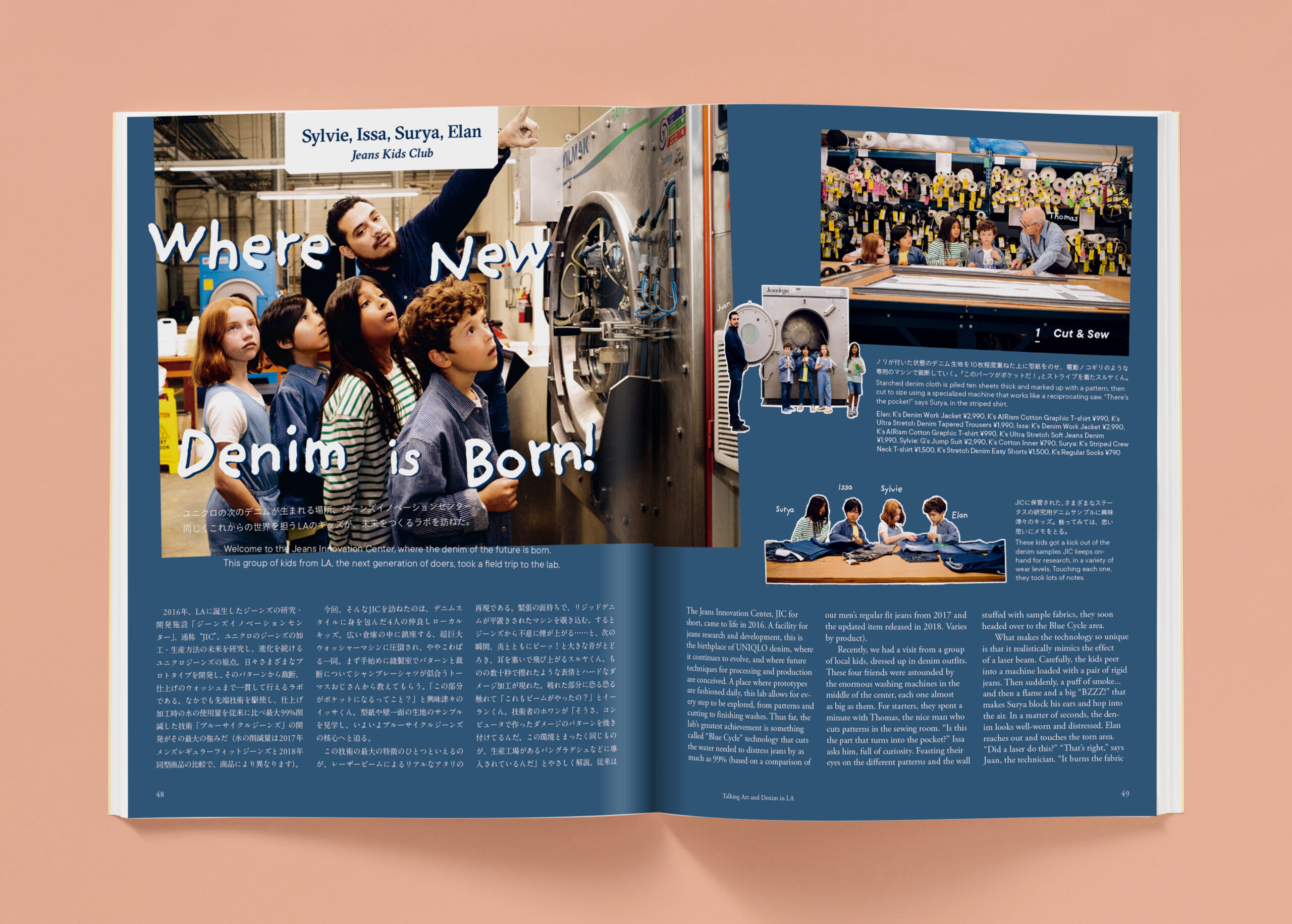
With the proliferation of digital media, it seems unlikely that there will ever be a full pivot back to print media. But in the meantime, I’m glad that I had a chance to dive deep into LifeWear Magazine. Far from being a clothes catalogue, the publication takes things into its own hands and sheds light on niche lifestyle stories that marry the worlds of art, fashion and all the beautiful things in between.
____________________________________
Feature image courtesy of UNIQLO Singapore.
LifeWear magazine Issue 08 ‘The Art of Everyday Life’ is available from February 17 2023 at all UNIQLO stores.






